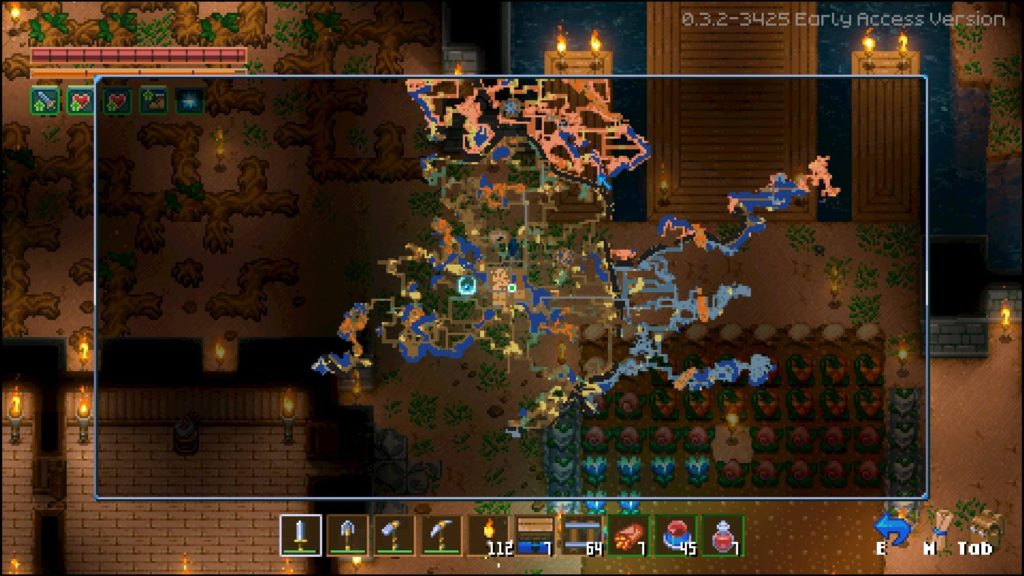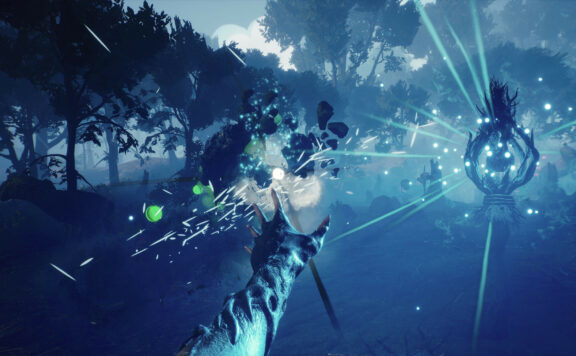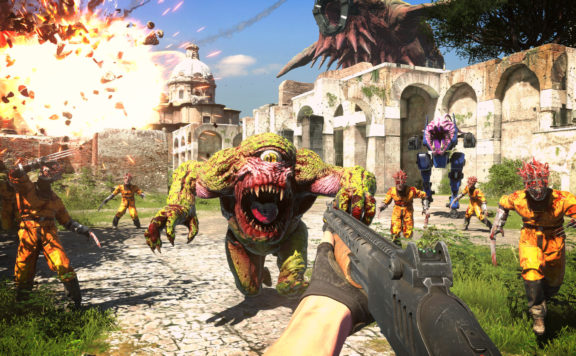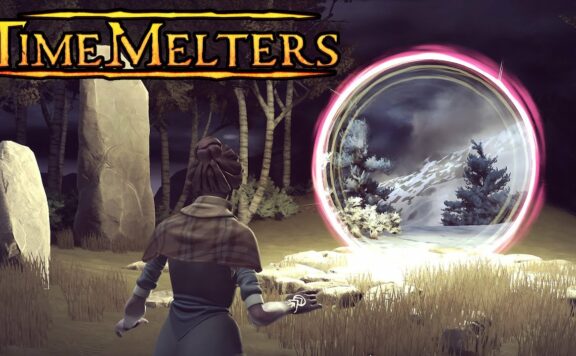Core Keeper, from developer Pugstorm, is a fresh take on the co-op sandbox genre. In the vein of titles like Minecraft, Terraria, and Stardew Valley, Core Keeper sets out to distinguish itself in this eclectic bunch of indie darlings.
An isometric, pixel art sandbox game by design, Core Keeper offers a host of systems and progression mechanics that aim to set it apart from the competition. How well does it fair in that endeavor? Grab that coffee, kick back and check out our preview of Core Keeper, from developer Pugstorm.
More Than Meets The Eye
Core Keeper at its core (pun totally intended) is a co-op, survival lite, exploration game. The isometric style lends itself well to this style of game, giving a uniquely grand perspective to just how large the world of Core Keeper is. Like many a title before it, Core Keeper drops the player into a world chalked full of mystery and intrigue. With little more than a few sentences of explanation, players are left to explore and discover what this dark, underground world has in store for them.

The pixel art style is on full display, creating a beautifully pixellated experience for players. Perhaps this is nostalgia speaking, but Core Keeper is a title that brings me back to some of my earlier memories of gaming. As a result, it’s a delight to jump back in every time and see what else the developer has designed.
With all pixel art games, it’s always interesting to see how a developer world-builds with intentional limitations as to how things can be designed. Core Keeper is a testament to how creativity trumps graphics. This Pixel Art world is an incredibly creative and uniquely designed experience for players. Every enemy, tool, and set piece looks distinct inside the art style and fits wonderfully together inside the world.
Leaning into that creative design, Pugstorm has created a world with a surprising amount of depth in both its lore and design. Even in an early access state, I’ve been continually impressed at how every new discovery leads to more unanswered questions. This is a key element to Core Keeper that I feel distinguishes it from many of the other indie darlings I listed above. Pugstorm walks a perfect line of leaving you the freedom to explore while pushing you to unravel the mystery of the world of Core Keeper.
Progression and Mechanics
Core Keeper includes a great mix of progression systems for players to unlock and spec into. Some, like the tech development system, are similar to Minecraft and Terraria. For example, a tin pickaxe is great for the biome closest to you but becomes inefficient as you progress out into the world. Thankfully as this happens you’re introduced to a new mineral that creates the next tier of pickaxe – the iron pickaxe. This model works the same with armor and other tools you’ll craft and develop.
This is a system that is synonymous with the genre. However, Core Keeper does a great job of not simply rinsing and repeating the same basic tools, weapons, and armor at each tier but instead offers new and interesting things to build and develop. This helps keep things fresh which pushes players to want to explore further.

On that note of crafting, I have really appreciated just how much there is to craft in Core Keeper. Along with the aforementioned item categories, there are a variety of buildings, bridges and even powered systems that can be created and manipulated to meet your needs in the world. Similar to Minecraft’s piston and Redstone system, parts can be combined in Core Keeper to create a variety of useful items from traps to lighting systems.
Another great piece of the crafting system is the rail and cart system. While other titles offer these, Core Keeper makes it a fundamental part of traversing the world. It’s hard to really explain how large the world of Core Keeper is as despite my 15 hours so far I still haven’t hit a boundary that was unpassable. Sure, there have been a couple of times where a specific tool or event trigger is needed but I’m still exploring this vast world. As a result, the rail and cart system has become crucial to that exploration. It’s a simple system to use and works well in the Core Keeper experience.
I would also be remiss if I didn’t mention the cooking system while discussing crafting. This system is historically a point of contention for me in most titles like this. I typically find hunger systems to be an irritation and cooking to be an extension of that irritation. However, Core Keeper has managed to take one of my least favorite aspects of the genre and make it one of my favorites.

It all comes down to two points; ease of use and clearly defined impact on the experience. The former is crucial for me. I cannot stand having to spend hours hunting and farming for materials to cook a basic stew only to have it fail because I mixed up a component or a bad RNG roll.
Core Keeper cuts out all of that and makes farming and cooking a breeze. In fact, combining any two items always creates some type of usable food. The resources, all of which can be farmed in your own base, all have basic attributes that contribute to the outcome. Glowing Tulips, for example, will always add a light aura to your character for a short amount of time. So no matter what I add Glowing Tulips to, I am guaranteed that result as a part of the newly created item.
The latter point is one that I really appreciate. Food always does more than simply curb the hunger meter. As every basic ingredient offers some type of temporary buff, each created food item has a direct impact on the game experience. This helps make cooking a vital part of the Core Keeper experience.

The final progression mechanic I want to highlight is the skill trees. I used the word in the plural because almost everything you do in Core Keeper, from walking to mining to fighting, all has a progression system attached to it. It might seem a bit overwhelming at first but it actually feels great when you are in the world.
You’re constantly progressing your character with every action. Additionally, the cost of respecting is minimal leaving you free to experiment. You can also lean into specific skills based on your playstyle. All of this comes together to create a meaningful system that truly impacts the player experience.
My only real critique of all of these is this last system. I love the concept and love the impact but it can feel like a slog sometimes to get those points to pour into each skill tree. Don’t get me wrong It’s great that every action helps you progress but it can sometimes feel like you go a long time doing the same thing before you get a point to make a meaningful progression in that skill. It’s not a deal-breaker but can be a bit discouraging to have farmed for two hours and only gain one or possibly two skill points to invest in gardening.
Combat Just Makes Sense
Combat is another area of Core Keeper that works well. Players can craft and find a variety of melee and ranged weapons. Each offers a variety of benefits from bleed effects to splash damage. This in turn allows players to cater their weapons to each combat experience. Combat itself is quick and fluid allowing you to move freely around the world while attacking both with melee and ranged.

In addition to the standard ranged and melee weapons, players can also create bombs and traps to aid in their combat experience. Some boss enemies require more planned strategies and with such a variety of weapons at your disposal, there is no shortage of unique ways to engage enemies.
Co-op For The Win
Co-op in Core Keeper is excellent. It offers a great way to play together. The system itself is easy to get up and running. The host simply creates the world and shares the world code with their friends and everyone jumps in. No passwords or network setup is needed. Simply add the code and join.
The host also hosts the world so there is some restriction in that other players can only access that shared world when the host is in it. This is offset though by the fact that there is no distinction between single-player and multiplayer worlds.
There is also no restriction on what you can bring into someone else’s world. In our case, Dame and I were working in a world that I was hosting. When we weren’t playing together he spent his time in his own world farming materials that he then brought back over for us to use to help progress forward together. Playing together is a blast and with support for up to 8 players, Core Keeper is a wonderful co-op experience.

Final Thoughts
Core Keeper is one of the most polished early access titles I’ve played. It offers a unique take on the genre. It builds on the concept of titles that have come before it while still offering unique and fresh ideas. With an array of progression systems, robust crafting, solid combat, and easy drop-in, drop-out co-op, Core Keeper is amping up to be the next indie darling in the vein of titles that have come before it. Currently priced at 12.99 USD over on Steam, Core Keeper is definitely worth checking out.
Pros
- Unique take on the genre
- Crafting and progression feel impactful
- Combat is quick and fluid
- Co-op is easy to use and a blast to play
Cons
- Skill points are a bit of a slog to gather







